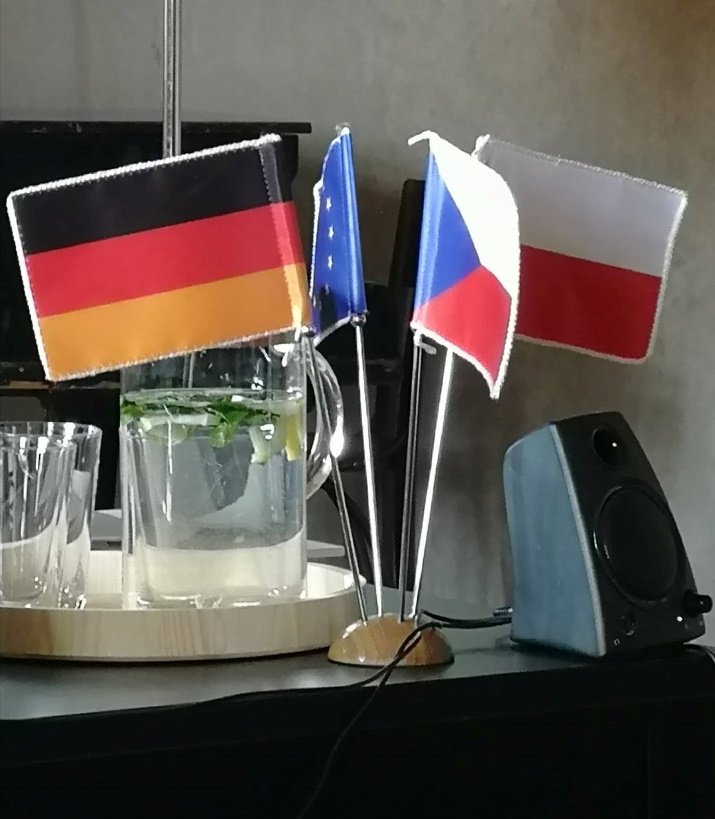Na hrad Grabštejn mají lidé s hendikepem vstup povolen
Mohli jsme se o tom přesvědčit během workshopu „Bezbariérové památky, vize nebo skutečnost?"
Úvodní slovo si vzala předsedkyně Spolku Disway pro podporu cestování handicapovaných, paní Mgr. Jana Panáčková. Partnerky projektu za německou stranu paní Juliane Wojan, MGO mbH a Susanne Mannschott, ZSG mbH, také řekly pár slov. Největší radost měly z toho, že se nad tímto důležitým tématem sešli pod jednou střechou lidé, kteří mohou nejen přispět do diskuze díky své odbornosti a zkušenostem, ale také chtějí něco změnit k lepšímu.
Jsme rádi, že přijal pozvání například pan Mgr. Miloš Krčmář, ředitel Národního památkového ústavu Liberec. Osvětlil nám na několika příkladech, jak se tato organizace snaží udržovat neocenitelnou historickou hodnotu památek a zároveň vyslyšet potřeby široké veřejnosti, kam lidé s hendikepem určitě patří.
O svůj úhel pohledu se podělila i Mgr. Věra Ozogánová, kastelánka hradu Grabštejn. Každý návštěvník je tu srdečně vítán, ale pro hendikepovaného je lepší se ohlásit předem, aby i pro něj byla návštěva hradu co nejpříjemnější. Není to jen o vozíčkářích, ale i nevidomých a v neposlední řadě neslyšících. Každé postižení vyžaduje jinou pozornost a pomůcky, jako například připravené nájezdy či haptický model hradu.
V další poutavé přednášce nám Ing. arch. Tomáš Efler přiblížil, jak i lidová architektura podstávkových domů může být zpřístupněná postiženým. Jak lidé žili v minulých stoletích a jak vypadala taková dřevěná usedlost uvnitř? Nejlépe tuto atmosféru zažijeme během různých lidových slavností, které se konají například v Merbolticích.
Nedílnou součástí cestování je kvalitní a bezbariérové ubytování. Ve svém příspěvku nám přednášející pan Markus Kranich představil, jaké možnosti pro lidi s hendikepem nabízejí ve Windmühle Seifhennersdorf.
Jsme rádi, že se také mohl online připojit pan Petr Hazuza z Konta Bariéry. Vyslechl přednášky všech účinkujících a přispěl do diskuze podnětnými připomínkami, například jak je důležitá pravidelná aktualizace zmapovaných dat.
Paní Mgr. Kateřina Novotná z Pražské organizace vozíčkářů má s mapováním bezbariérovosti objektů v Praze dlouholeté zkušenosti.
Zmínila například skvěle řešenou přístupnost Národního muzea. Na druhou stranu jsme mohli vidět úsměvné příklady toho, jak architektonické prvky, které možná dávají smysl na papíře, nedávají smysl v reálném životě. Někdy to naopak znamená pro hendikepované velkou překážku.
Nájezdy a nenápadný výtah na hradu Grabštejn jsou ovšem dobrým příkladem toho, jak se bariéry i v historickém objektu dají řešit.
Společně s našimi partnery věříme, že mobilní aplikace Disway Trails, kterou na workshopu představili naši vývojáři Tomáš Hluštík a Tomáš Bien, bude přínosem pro komunitu hendikepovaných. Ohlasy jsou velmi pozitivní a doufáme, že díky této aplikaci dodáme lidem s hendikepem odvahu objevovat místa nejen v česko-německém pohraničí, ale i v dalších turisticky zajímavých regionech.
Byl to moc hezký a úspěšný den. Snad se nám podařilo propojit ty správné lidi, kteří pomohou odstranit stále přítomné bariéry a postiženým ulehčí cestování.
Maruška Harcubová






